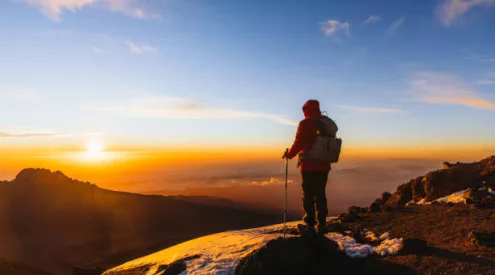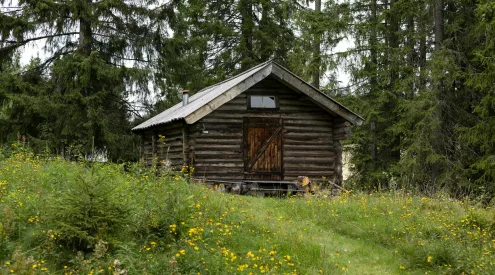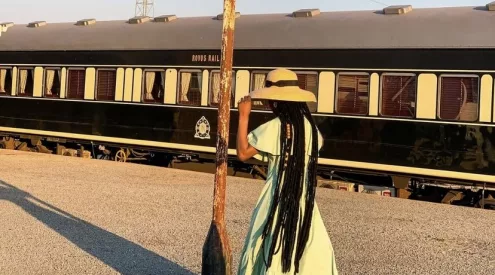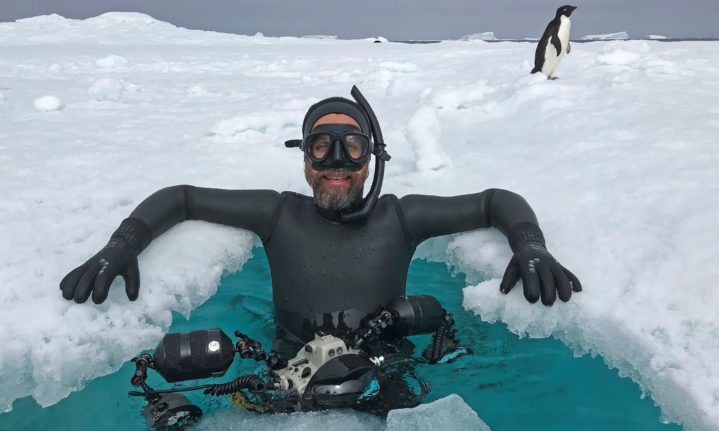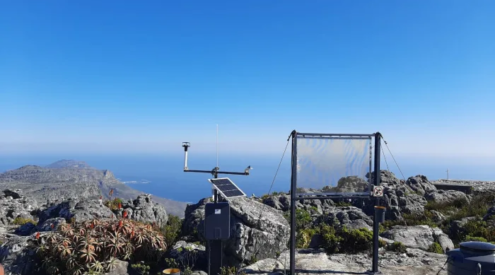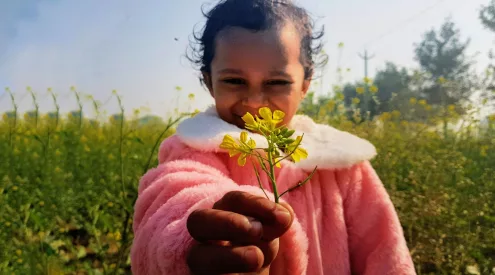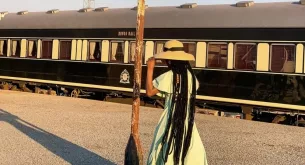Thomas Peschak, marine biologist and National Geographic photographer is as at home under an iceberg as he is inside a volcano, in a kelp forest or in the middle of the desert.
Thomas has published eight books and his latest, Wild Seas, showcased in the June issue of Getaway (on shelves now,) is full of spectacular images from southern Africa, Seychelles, the Galápagos, and various forgotten places in between.
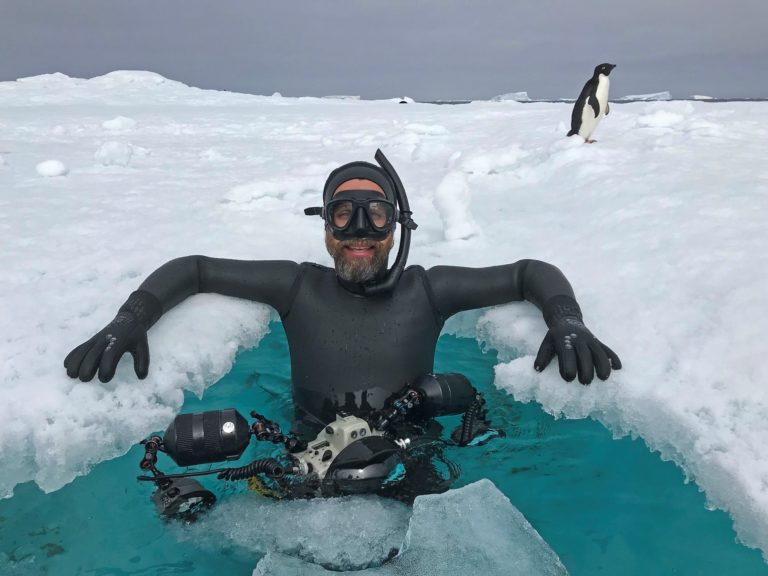
“I wanted to be a marine biologist since I was probably ten years old. I grew up watching documentaries and reading copies of National Geographic magazine. But I didn’t want to be a National Geographic photographer. I wanted to be one of the marine biologists that were actually in the articles and the documentaries. Everything I did from that time onward was really focused on accomplishing that goal. I was a teenager, learning all the Latin fish names.
I came to South Africa in the late 90s to do my PhD in marine biology at UCT. My research was looking at kelp forests mainly off the Western Cape, and more specifically, I was looking at the impact of abalone poaching. I was based out of Pringle Bay and Betty’s Bay for many years, doing a lot of underwater work monitoring abalone populations. After poaching events, I would spend time with anti-poaching teams, documenting how many abalone we were losing and how many were confiscated. I walked into pretty much a perfect poaching storm at that stage because between the late 90s and early 2000s, those years were what people still call the Abalone Wars, and I was embedded in them to try to work out what the ecological impacts were.
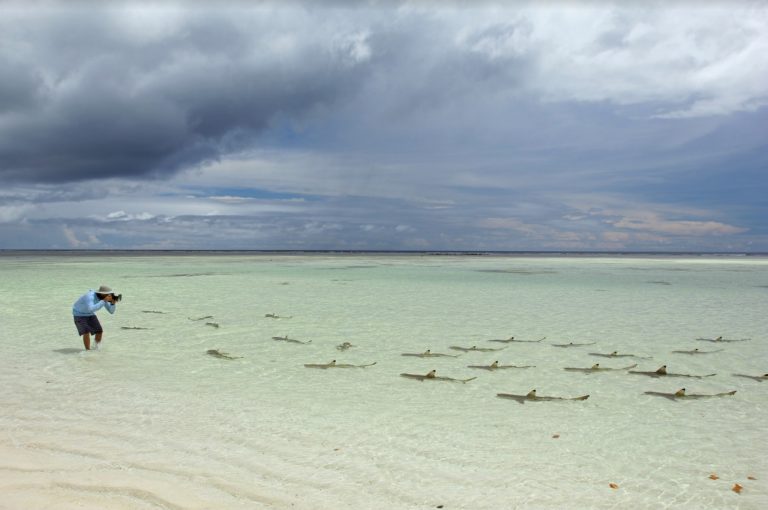
From Wild Seas: I love being immersed in wild places; they inspire me to create images that I hope make a difference. But reaching them is never easy. Getting to Aldabra’s shark-rich shallows took a week, two commercial flights, one $25,000 chartered propeller plane, and six hours on a small boat through rough seas.
My scientific data was pretty crystal clear; we were losing abalone populations at an alarming rate. I was losing so many abalone on my research site, I’d mark the abalone and the next they’d be gone. So as a scientist, I was racing the poachers to actually do the research before those abalone beds disappeared. The predictions were abysmal, but all my appeals fell on deaf ears. I mean, the reality is nobody gave a shit about my statistical significance test and nobody cared about my graphs and my multi-varied analyses. It was just science and jargon. It didn’t inspire anybody.
At the same time as I was collecting all this scientific information, I was also making photographs underwater, and above, and I was making them mainly to illustrate my science, and to use in presentations in my thesis.
Those images were rudimentary at best, not the same as I produce today, but I had access to the abalone poaching front line, I had access to a world that very few people had access to and I began to publish those images. It started with local newspapers, from the Hangklip Herald, with their readership of say fifty people, to later the Cape Argus and the Cape Times and then Getaway and Weg! and then the BBC. South African abalone poaching and the ecological impacts, my research, was making its way around the world. All of a sudden, people’s ears pricked up.
The same organisations who just sort of shrugged their shoulders at my reports, all of a sudden were galvanised into action. A few months later we had much better anti-poaching units, we reduced poaching by 90% in a matter of months. What I couldn’t do in years with data, I managed to do with a bunch of photographs, but marine research and marine science still underpin everything I do.
If I had one wish, I would wish for time travel and in January 2021, I came as close as I think I’m ever going to get. I was in Antarctica , and we were the only expedition down there. For the first time in over 60 years, Antarctica was free from tourists and most scientists. The last time this happened was in the 1950s. We literally had the entire Antarctic Peninsula to ourselves, so that allowed me to make photographs all day.
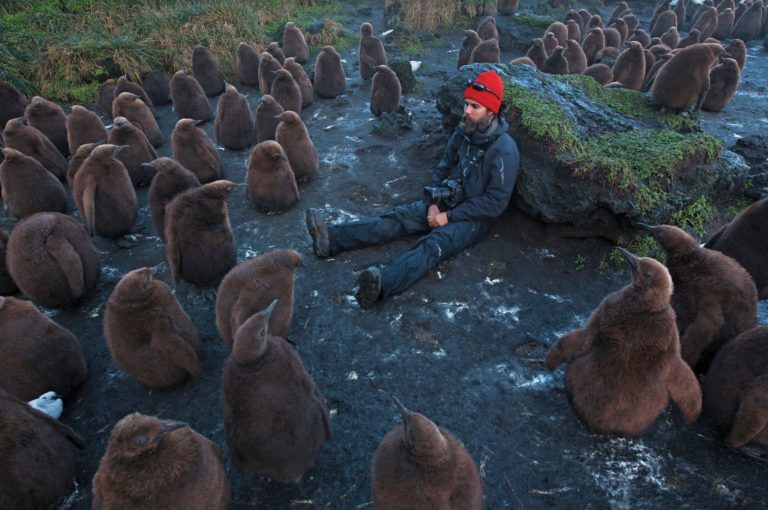
From Wild Seas: Laws of Attraction • Most of my life is lived behind the camera, and the only time I became a chick magnet on a National Geographic shoot was in a creche of king penguins. On subantarctic Marion Island, these young birds were instantly drawn to me; they could not stop staring at this strange, bearded bird in a red hat.
I’m better known for my marine work but when I first began to publish stories for Africa Geographic in the early days, I did as many terrestrial stories as I did marine stories. If it’s a great story and if the narrative can really capture a critical conservation issue, I don’t really care whether it’s in the ocean or on land. I just like telling powerful, interesting stories that have the potential to make a difference.
I had a memorable time in the Kalahari with pangolins. What an amazing species, so incredibly shy and secretive. To photograph them fully in the wild is incredibly difficult. What I really wanted to do in the Kalahari was make some never before made images of wild pangolins. Working with scientist, Wendy Panino, we spent ages working and following individual animals. And at the beginning, I couldn’t get within 15 metres of them. I was using long 600 mm lens and little by little every day, every week, the animals became more and more relaxed, getting used to our smell, getting used to sound. And after about six weeks, I remember it as clear as day, but it was the middle of the night. A full moon was up, and I was lying on my belly beneath this little camel thorn tree. And right in front of me, bathed in moonlight was this female pangolin just lapping up ants and termites. She completely ignored me. And with a wide-angle lens, I was able to capture a really intimate scene of one of the most elusive and hard to photograph animals in the world.
To produce good photography, it’s a matter of putting in the time. There’s no shortcut, it’s putting in the hours, the days, the weeks, the months. As a National Geographic photographer, I always try to show my audience something they’ve never seen before. I don’t want to repeat things or do a variation on a picture that’s out there. It can take weeks and weeks to make a single image, and for every photograph you see in all its glory in the magazine or on Instagram, there are countless failures where things just don’t work.”
Pick up a copy of the June issue of Getaway to read about Peschak’s photographic career highlights (three of which took place in South Africa!)
Buy a copy of Wild Seas for R695 here from HPH Publishing.

ALSO READ
Peter and Beverly Pickford’s ventures to the Edges of the Earth

